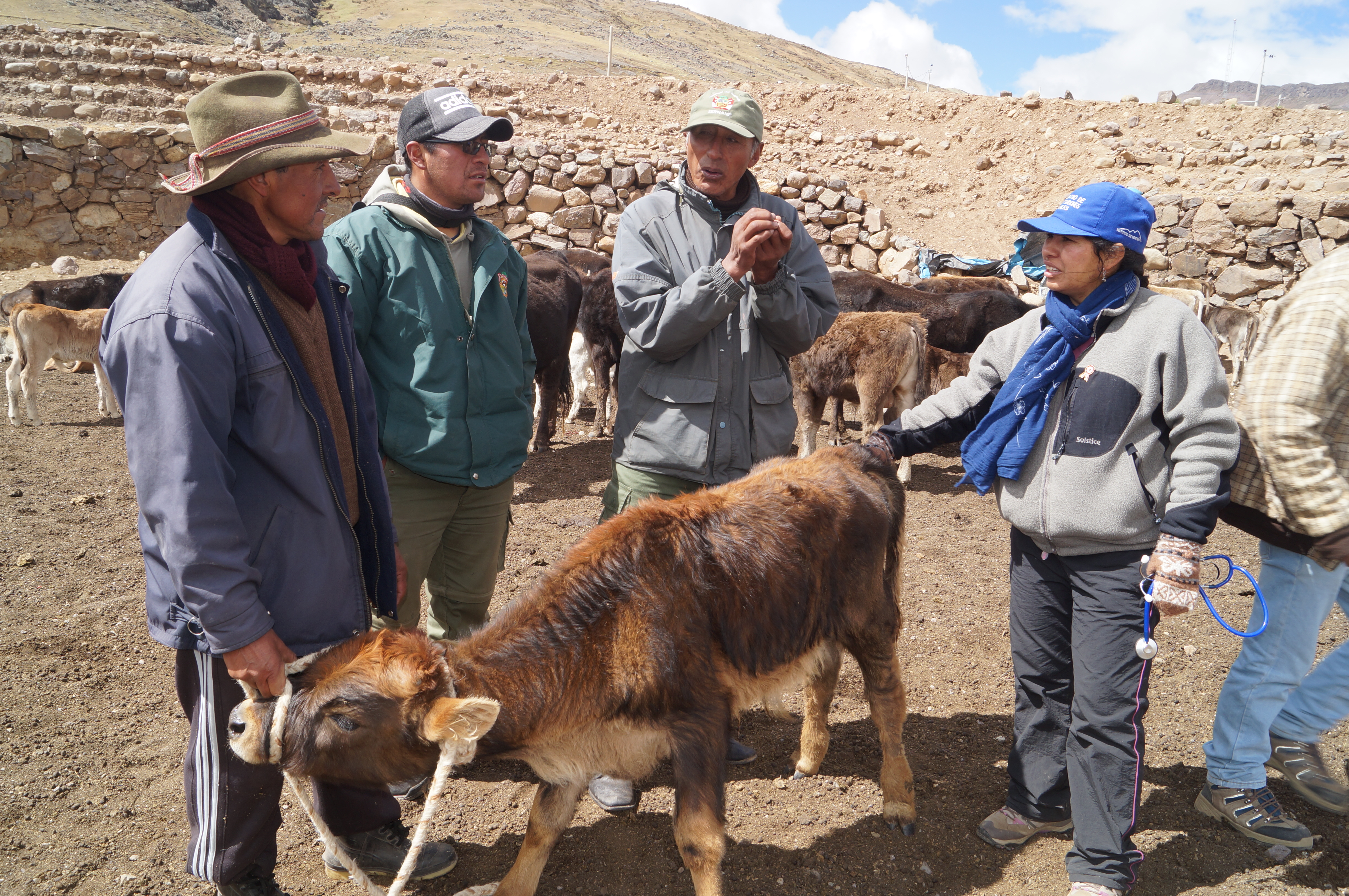

This component has been transversal to the entire project and included training and workshops on livestock and pasture management, animal health, and planting and harvesting water, carried out in collaboration with the Universidad Nacional del Centro and external specialists. These activities helped to raise awareness among cattle ranchers and managers of the communal farm and testimonies indicate that their skills in these areas have increased.
Local knowledge was key to developing the livestock management strategy and the shed's design and construction. The use of ancestral technologies existing on the ranches, such as stone corrals, and local materials were chosen.
As part of the communication activities, an awareness campaign was developed with the support of the Rare organization to promote sustainable grazing practices within the community. The campaign, which used the slogan "Smart grazing is the pride of my people", included radio soap operas, comics, and plays with the participation of women and men of all ages. This helped raise awareness among the population about the importance of proper pasture and livestock management and helped disseminate information about the project at the community and NYCLR levels.
- Use of communication tools to disseminate information about the project and raise public awareness about climate change, the importance of adaptation actions, and the sustainable management of natural resources.
- Dialogue between local knowledge and technical-scientific knowledge, facilitated by specialists in participatory processes.
-
The active collaboration and leadership of the livestock department (committee) were key to achieving active participation of the local population during the workshops.
-
Adaptation measures, from their design, must incorporate local knowledge and respond to community priorities and perspectives to ensure their effectiveness, viability, and sustainability.
-
It is essential that the field team is trained in the application of participatory approaches, methods, and tools that contribute to improving the quality of participation and facilitate collective learning and dialogue between local, technical, and scientific knowledge.
-
It is essential to incorporate all community members in communal assemblies to encourage participation.
-
Communication activities help to raise levels of trust and participation, as well as local ownership.
-
Diversify work with local partners, combining workshops with other methods, practical tools, and fieldwork (of the "learning by doing" type).
-
Develop activities that involve women, youth, and other groups within the community.
-
Maintain a high field presence and share daily updates with the community.